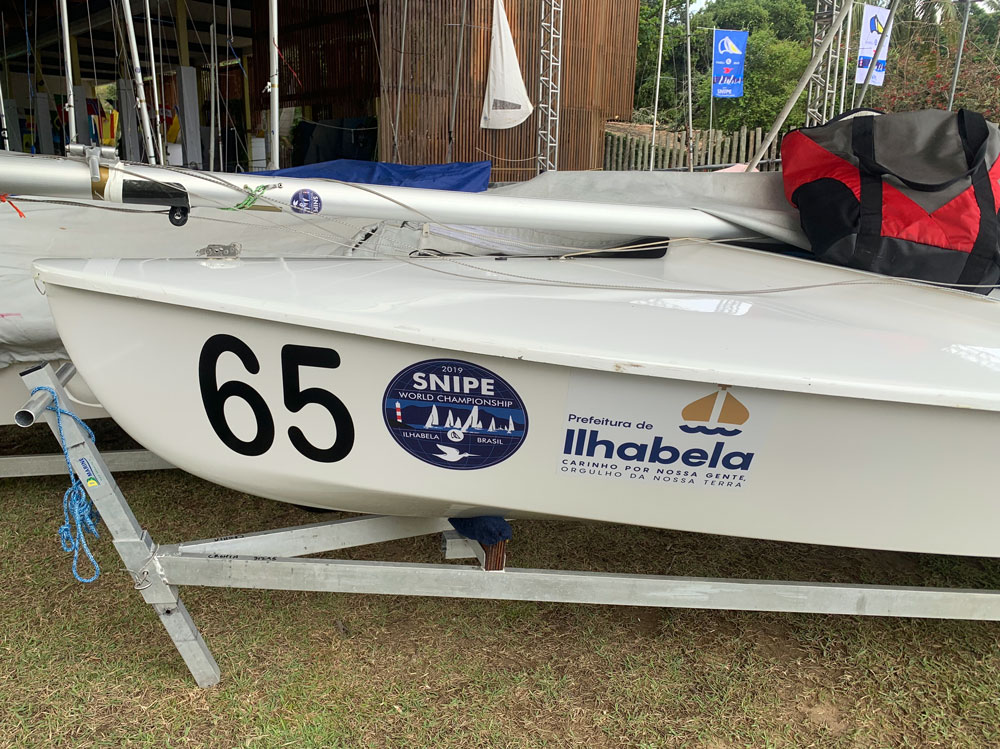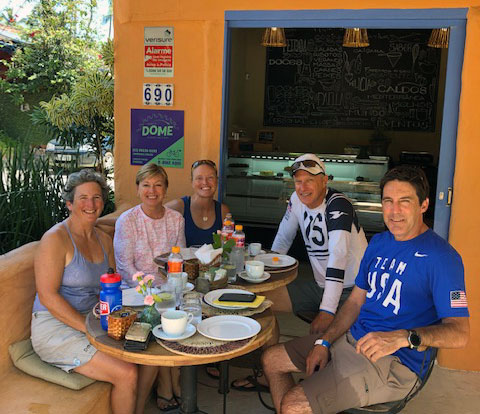I’m sailing the Snipe Open Worlds this week in Ilhabela, Brazil, a well-named (“beautiful island”) mountainous tropical paradise one kilometer off the coast. To get myself here required a bus, a plane, a car, and a ferry. To get my Snipe here required a four thousand mile container ride from Miami for the boat and its eight friends. (I’m still wondering how that container truck made it around some of those hairpin curves.)
All in all, shipping boats was a huge logistical challenge. And it was all totally worth it.

The alternative, of course, was to charter a local boat. For our biggest regatta of the year, I would’ve packed as many tools and spares as I could, wishing I could fit my entire Snipe into checked luggage. For better or worse (or both), Snipe rigging is quite complicated—and quite personal. The muscle memory of the multiple adjustments needed to sail these boats is based on years of habit I don’t even realize I’ve built up—until I step into another boat and try to sail it at the same level.
This is my first Open Worlds sailing my own boat, so I am especially sympathetic to the friends who spent their pre-race days going through what I now call the Five Stages of Chartering. Though the details and timing will vary significantly for each person and each boat, the basics remain the same. Here’s a snapshot.
1. Excitement
“This is going to be the fastest Snipe ever.” This phase begins as soon as you line up the charter and builds momentum slowly, but it ends quite suddenly—either when you first pull the covers off the boat, or when you go sailing for the first time. It may well be the fastest Snipe ever, but it’s not YOURS. The vang line should be blue! Measurements aren’t the same! This quickly morphs into:
2. Grief
“This isn’t the boat I thought it would be.” The boat’s actual abilities don’t matter; what matters is that it doesn’t feel right to you. So you leap to:
3. Denial
“With a little work, we can make it just like our boat at home.” Which takes you to:
4. Work
Out come the tools, line, and hardware. “Can I borrow…” becomes your mantra. While others catch up with friends, go out training, and make a few small refinements to their own boats, you keep your head down trying to check off all the items on your work list, hoping to make the practice race.
And finally…
5. Acceptance
“Forget about the boat, we’re going sailing.” You run out of either time or patience (or both) and realize that you’re never going to make this boat YOURS—which is okay.

I would argue that the faster you get to acceptance, the better, because it leaves more time for fun meals with friends and sightseeing. But I also know from personal experience that this process can’t be rushed. Each stage is a necessary piece of building a bond with this new member of your team, even if it’s only for this regatta.
I can’t tell you how happy I was to be the observer this time, rather than the one working through these five stages. Next time I charter, I will try to take my own advice and work through to Acceptance as fast as possible.
Snipes are like friends; they all have their quirks. The secret to charter success is to fix and improve what you can, without spending all of your pre-regatta days working on the boat. Because once you get home again, you’ll remember those fantastic lunches with friends from around the world—not what color the vang line was.